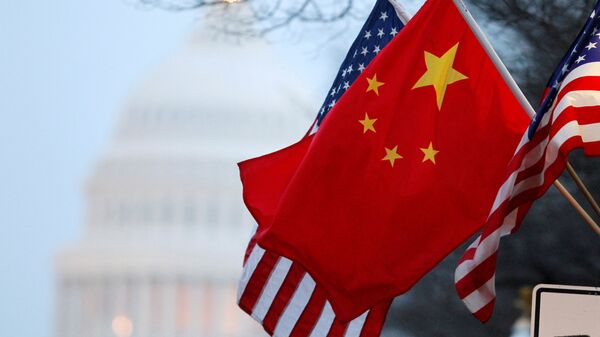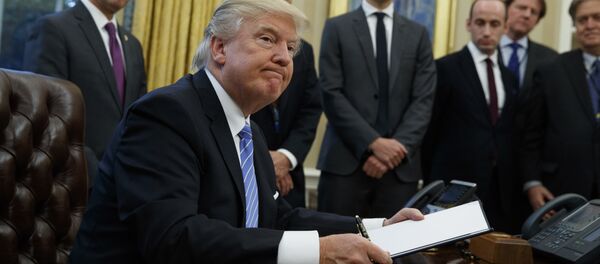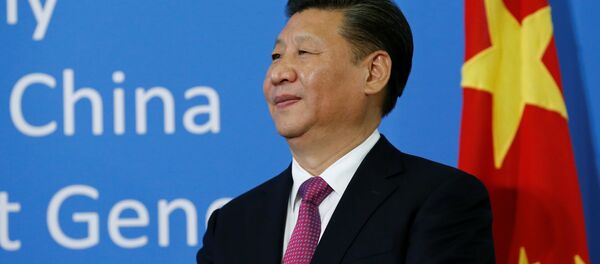“The Chinese government is against the political program of the Trump administration regarding the development of the most advanced missile defense system, as it may exacerbate the arms race instead of facilitate a peaceful disarmament,” Deputy Director of the Institute of International Relations at the Renmin University of China, Jin Canrong said.
According to the director, the development of nuclear weapons and intercontinental ballistic missiles is a strategy pursued by the DPRK. It is also a direct cause of why the US is developing the latest missile defense systems.
“The development of US missile defense technologies inevitably compels the DPRK at an accelerated pace to develop nuclear weapons and intercontinental missiles, because the ability of the US to strike is undoubtedly very high. This definitely negatively impacts the security of the entire East Asian region,” Canrong said.
Looking at the TPP and the recent decision made by Trump, the deputy director said that TPP literally “pushes China,” and leaves “China behind the door.”
Trump’s abolition of the TPP is not a bad thing for China. However, the emphasis that Trump makes on trade protectionism will benefit neither China nor US-China relations.
Expert from the Center for American Studies in China Tao Wenzhao also spoke with Sputnik about Trump’s decision and said that during the campaign, Trump talked a lot about loss of jobs in the US because of Mexico, Canada and especially China, who took the Americans jobs.
“Much of the content of his 16-minute inaugural address was devoted to the production of American-made and the question of hiring American workers. This is the main idea of his political program,” Wenzhao said.
The expert said that globalization has positive aspects, but at the same time it has an impact on the issue of employment in the country.
“Through trade protectionism policy, Trump wants to resolve the problem of employment in the country. He may appeal to American companies to build factories in the United States, to increase taxes on imported goods, as well as to put pressure on the key US trading partners,” Wenzhao said.
Expert from the Center for American Studies at Fudan University, Wang Xiaofeng, said that, “The scope of US and China economic and trade cooperation is a sort of ballast stone boat relations between the two countries. If you have problems in trade and economy, the relationship itself will be under pressure.”
He further said that the revision of trade agreements, the inclusion of China in the list of countries that controls the exchange rate was the pre-election promise of Trump. So, even if Trump has forgotten them, his competitors and people will not forget it and he will probably have to comply with those revisions.
“Chances are that the government headed by Trump will take in a series of measures with China in terms of trade and economy,” Xiaofeng said.
Hidenobu Tokuda, senior economist at Mizuho Research Institute, spoke to Sputnik about the impact of the TPP's demise on Japan.
Looking at the idea of an 11-nation TPP, the economist said that, “The 11-nation TPP could be a possibility but it could not be the alternative to full-country TPP, because the presence of the US is essential in creating the single leading model of trade agreement.”
He also spoke about the future of the Japanese PM Abe's objective, saying that it is to restrain China's expanding influence in the Asian region and this is why he has invested his political capital on TPP.
“Therefore, he would persuade the US to return to TPP first. If this should fail, he would negotiate bilateral [US-Japan] FTA but this would be a tough negotiation because Trump is showing an aggressive stance on Japan to open the market for the US companies,” Tokuda said.
The TPP seeks to remove barriers to trade among its 12 signatories, which together account for 40 percent of the world's economy: Australia, Brunei, Canada, Chile, Japan, Malaysia, Mexico, New Zealand, Peru, Singapore, the United States and Vietnam.
The restrictions on Asian imports proposed by Donald Trump are part of his strategy to revive domestic production and give up on the “global division of labor.”





